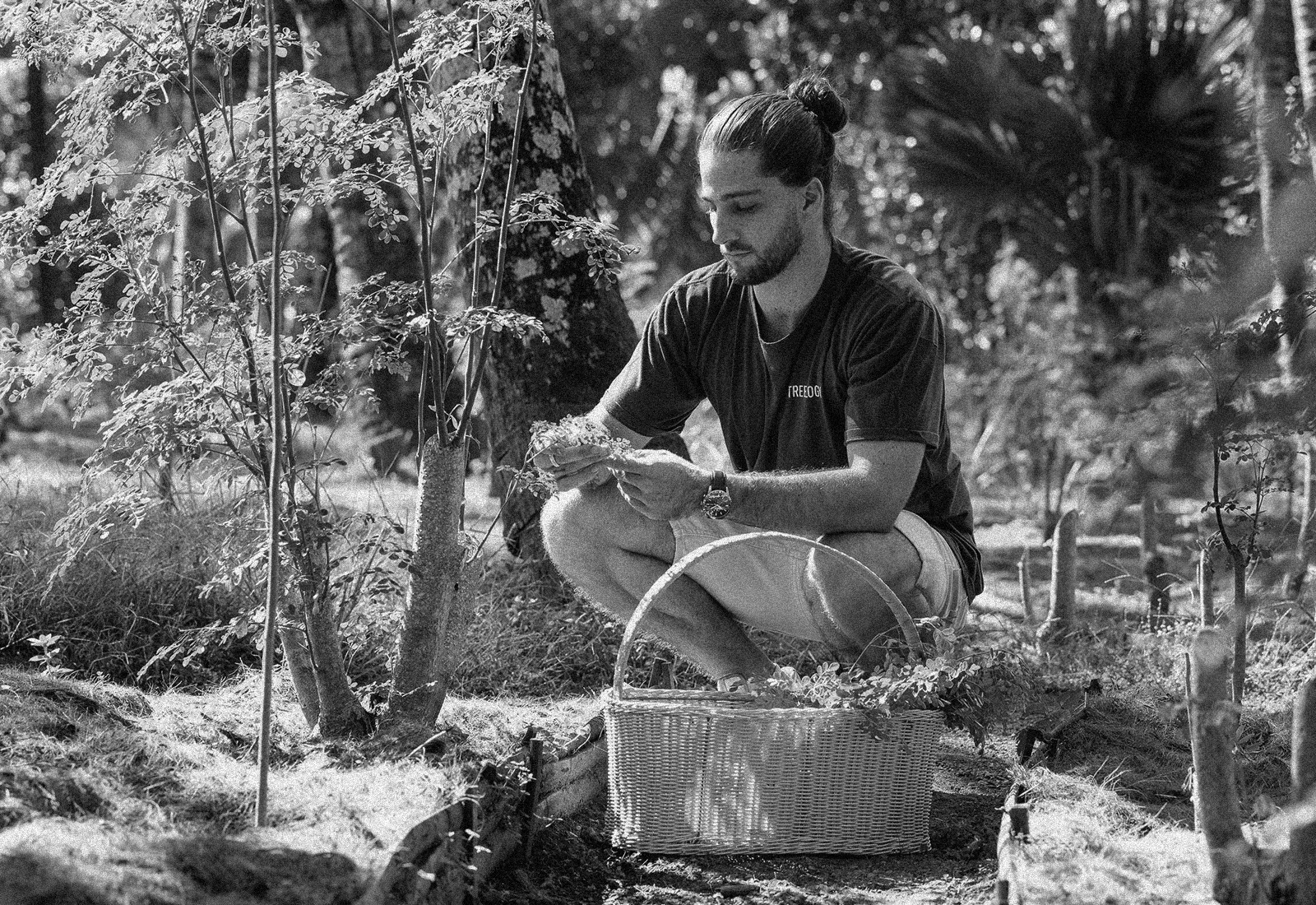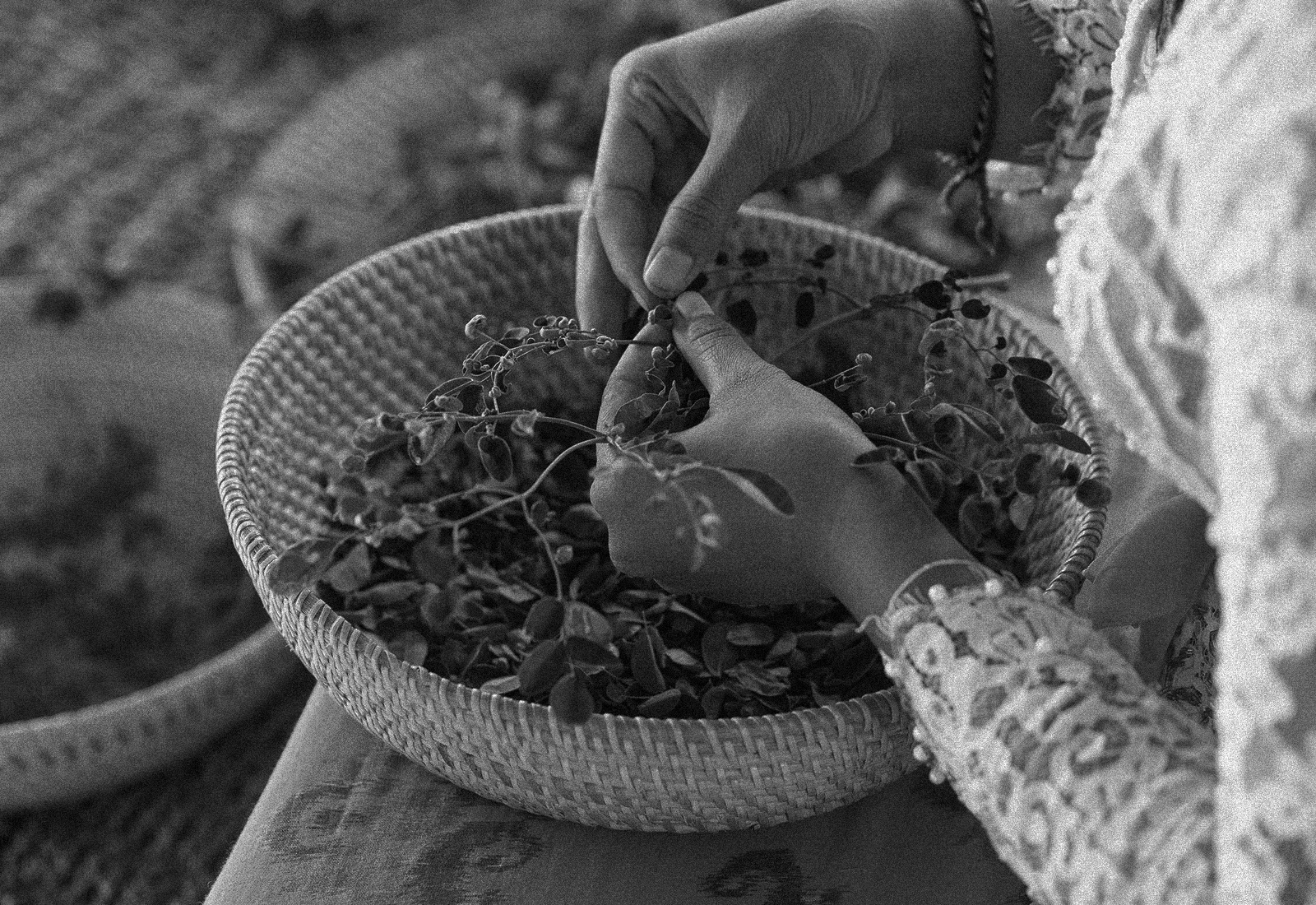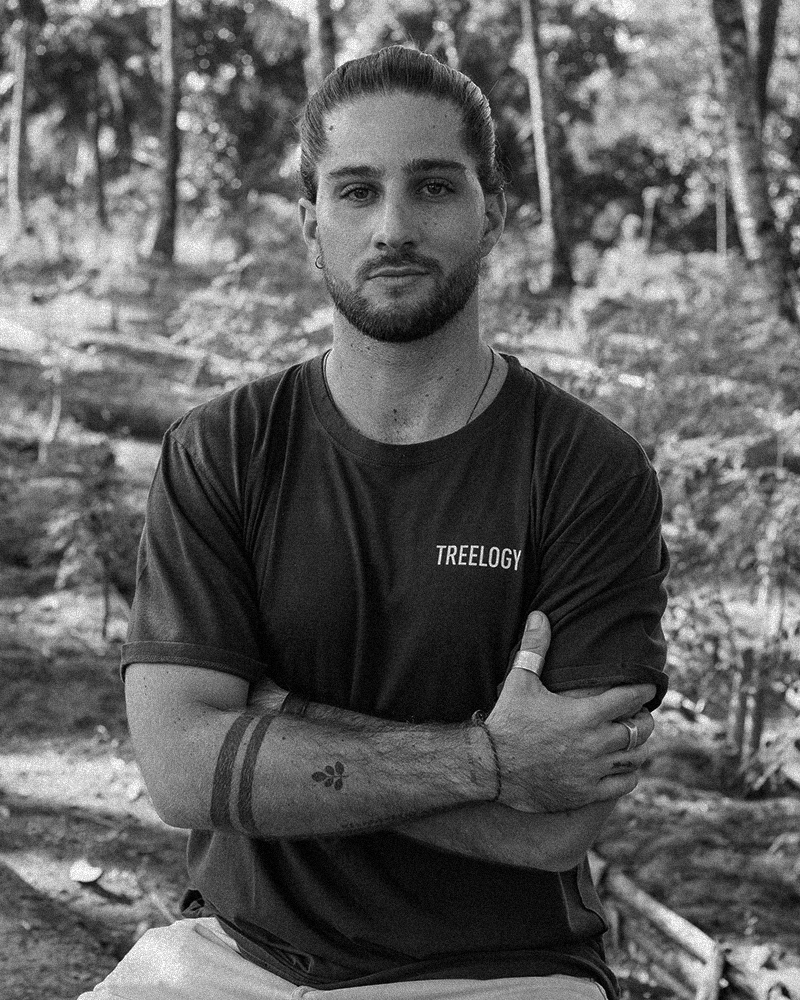THE PUNCH PEOPLE
Meet Sacha Aguila:
Founder of Treelogy
Treelogy is a regenerative farm and ethical brand rooted in East Bali, dedicated to producing premium Moringa while uplifting local communities and restoring the land. Guided by the principles of People Care, Earth Care, and Future Care, Treelogy goes beyond sustainability to cultivate a future where farming nourishes both people and planet.
INTERVIEW
'When you have a personal connection to nature, it is especially heart-breaking to see the changes brought about by climate change and human impact. The harm we’re doing to our environment is no longer distant, it has become personal.'
CHRISTINA, CAN YOU SHARE A LITTLE ABOUT YOUR BACKGROUND AND THE JOURNEY THAT LED YOU TO FURA?
Sasha and I met in Copenhagen when I was working at Noma and she was working at Empirical in 2019. Fura is very personal to Sasha and me. It came about after we moved to Singapore from Copenhagen in 2022. As we discuss having a family one day it really puts everything into perspective and gave us momentum into creating a space that represented how we want future systems to work on the large scale. I’ve always had a passion and deep desire to live with an awareness that your actions and consumption have a deep effect on the rest of the world. You might only think of yourself as one person but collectively we all think that and now we’re 9 billion people. My previous job also gave me a unique perspective on natures fragility and abundance that imprinted a lasting impression.
My job as a forager was to pick wild ingredients from all types of landscapes like beach dunes, grasslands, forest, waterways etc. working for a restaurant, it’s my responsibility to be resourceful and know what locations could grow what ingredients during various seasons. I would have interns from the restaurant join me to learn and pack ingredients too, sometimes working 14-18h hours in the summer and driving nearly 500km in a day. There was a key moment for me that lead to the initial brainstorming that is now FURA. I visited the same terrains, day after day, season after season for years. I knew each path, hill and bend like the back of my hand, they felt like a second home. Specifically, there was a beautiful forest just north of Copenhagen, I visited almost daily for five years with incredibly tall trees and the sun peeking through the canopy, straight out of a fairy tale. I had returned a season later and all the trees had been chopped down. The grasses, ferns and ant hills had been destroyed all to make way for more mountain biking paths. It was this moment that I realised what had been done here was just a tiny scale of what is happening to our whole earth. When you have a personal connection to nature, it is especially heart-breaking to see the changes brought about by climate change and human impact. The harm we’re doing to our environment is no longer distant, it has become personal.

WHAT WAS THE ORIGINAL INSPIRATION BEHIND FURA, AND HOW WAS THAT VISION EVOLVED SINCE OPENING IN OCTOBER 2023?
I guess I explained a bit above but to add on, through these conversations and experiences, stem the ideas that are now embodied by FURA today. FURA is the future and for our future. Our vision is to showcase an experience on how our diet could look like in the future due to climate change. The concept and menu are designed around
highlighting ingredients that have now become prevalent, invasive or in abundance due to the imbalance of the ecosystem and overall lower in carbon emission. We recognise that many people will not become plant based for all sorts of reasons but how can we show overall how conscious dining can still be fun, tasty, and without complete sacrifice. Change is in numbers and every effort counts. Create a lifestyle that gives you longevity in your actions and do it with intention.
The market has changed a lot in the past few years, so we adjust an adapt to what we think the consumer wants and what theyre ready for without compromising our ethos. So we’ve made minor changes on how we present the menu develops of the dishes but overall, we stand very strong over the past two years.
FURA TRANSLATES TO "PINE" IN SWEDISH, SYMBOLIZING COLLABORATION AND SURVIVAL.HOW DEOS THIS IDEA GUIDE THE WAY YOU APPROACH FOOD AND DRINK?
The food menu stands by highlighting more of a producer focused collaboration, drawing attention to certain farms/farmers and their practices or artisans and their crafts. Over more, the drink menu is very flavour and ingredient focused. Every cocktail has a future-proof highlight ingredient, albeit a future protein, a social awareness, or an overly abundant ingredient.



'We love working with like-minded people, as it’s always the small guys taking the extra steps in making a difference.'
WHY DID YOU CHOOSE SINGAPORE AS THE PLACE TO BRING FURA TO LIFE, AND WHAT KIND OF IMPACT DO YOU HOPE IT WILL HAVE ON THE CITY'S DINING CULTURE?
For a few reasons, one Sasha being Singaporean and has a support system and the resources for us to open a business. In addition, we felt the market needed something new. Many people asked us why we didn’t open in Denmark or somewhere in Europe, but we felt we would have much more impact when in an environment where there is a direct need for an experience or a thought process or some education on a topic like this. It’s definitely more difficult because you must be more patient to grow a consumer base was open to the idea and ready to absorb this information and concept, but extremely rewarding at times too.
YOUR MENU INTRODUCES GUESTS TO FUTURE FOODS SUCH AS INSECT PROTEINS, CELL-CULTURED PRODUCTS, AND INVASIVE SPECIES. WHAT MAKES THESE INGREDIENTS IMPORTANT FOR THE FUTURE OF DINING?
With carbon emissions being our Northstar metric there’s a lot of factors that contribute to this such as resources needed to grow these things production facilities processing food miles storage etc. For us it’s not one hard and fast rule to sustainability so we’re showcasing on the menu lots of different ways. Wow some sections of the menu are highlighting an ingredient grown 5 km away on another section were repurposing Produce that would be food waste yet grown in a different hemisphere. In general plant- based food has significantly less carbon emissions than animal based products we do recognise for all sorts of reasons most of the population would not become plant based so how can we incorporate and introduce proteins that fit into the future our world is headed towards. In our eyes this includes insects as they are an excellent protein source with mass reproduction and incredibly low resources needed. Or cell based milk and meat, which are relatively new to the market but also offer many pros in terms of reduced resources like water feed and land usage all while not partaking in animal exploitation.



YOU ALSO HIGHLIGHT ABUNDANT CROPS AND WORK WITH LOCAL HYDROPONIC FARMERS LIKE GREENLOOP FARMS. HOW DOES THIS SOURCING APPROACH SUPPORT BOTH SUSTAINABILITY AND CREATIVITY?
We love working with like-minded people, as it’s always the small guys taking the extra steps in making a difference. Having personal relationships with where your food comes from is extremely important in understanding our food systems, having important conversations of how and where we can improve an overall getting the best ingredients to work with. Sharing passion with somebody is really inspiring. It also translates to our guests when our team can share their experiences with how a dish came about or where a drink inspiration came from, building is connections are essential to fixing our food sourcing and food systems.
FURA is known for turning unusual ingredients—like mealworms or jellyfish—into exciting dishes and cocktails. How do you encourage guests to approach these experiences with curiosity rather than hesitation?
While most of our food menu doesn’t fit a certain cuisine or style our drinks are also not built on classics- except when it comes to the niche ingredients. As a venue desk put their trust in us to deliver them something delicious but sometimes familiarity goes a long way in making correlations. When we include one of the niche ingredients, we build it parallel to something identifiable, such as the mealworm we turned into something like a spicy savoury margarita, or the jellyfish into a clean crisp dry martini. This helps bridge guests into something that is unfamiliar yet comfortable.

How do you balance being thought-provoking about sustainability while still keeping the dining experience fun, enjoyable, and memorable?
No matter what we’re hospitality first , so we work it backwards on fun, enjoyable and memorable experiences, but through those steps, how can we dissect them and create a more thoughtful path. It’s really important to us that we show how conscious consumption can still create a very satisfying experience.
With your UGLY DELICIOUS fermentation project, you give new life to produce that might otherwise be wasted. What have you learned from working with food waste in this way?
You must be patient and flexible with your product or ingredient and that’s okay, things take time, many cannot be rushed without consequence.



What do you hope FURA will inspire—not only for your guests, but for the future of food and drink more broadly?
To develop a relationship with where your food comes from. You grow a much deeper respect for the food you consume when you have a direct relationship with where it comes from. I’ve seen this first-hand with interns at the restaurant and how they treat the product after they’ve spent hours picking it themselves in the forest. The waste is much less, and the overall respect is profound. For example, if your family friend has a backyard garden and grows vegetables and gives you some pumpkin or tomatoes, you’re not going to let that rot in your fridge because you want to regard and appreciate their efforts. You’ve seen their passion and hard work. If we can all develop furthering our education on food systems and truly understanding what our impact is as consumers, we will be better equipped to make more conscious and thoughtful decisions. This applies on all scales.
What does the future look like for FURA—are there any new projects, features, or directions you’re excited to share?
We want our impact to be felt outside our space with future collaborations that can be more scalable. We do have several in the works creating wastage products into fabrics, collaborating with a small zero-alc movement startup and moving into some lifestyle sectors. But for now, we’re just happy having eloquent conversations with guests all week long, hopefully in turn, inspiring to make small changes for lasting impact.
EXPLORE THE PUNCH

